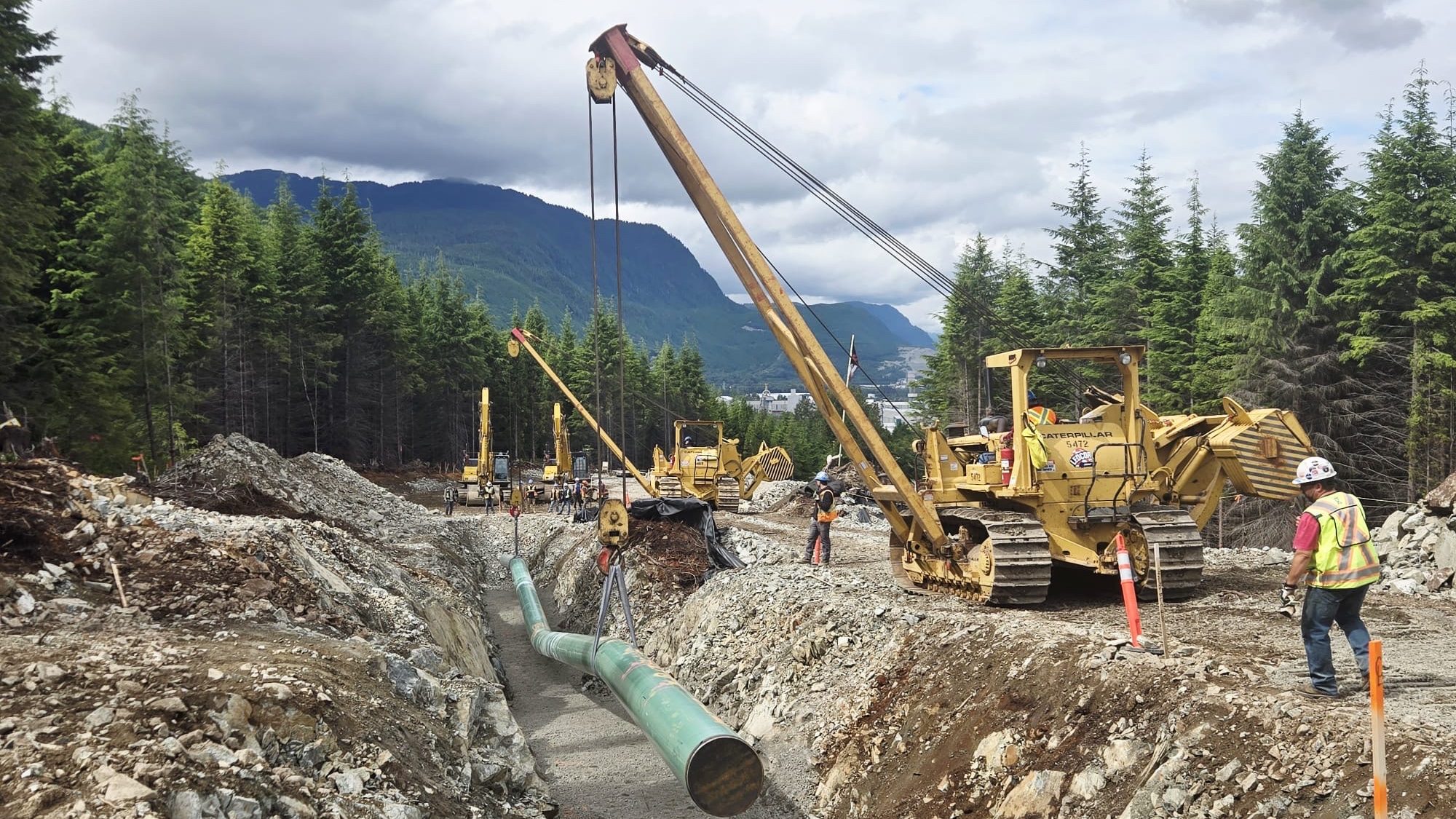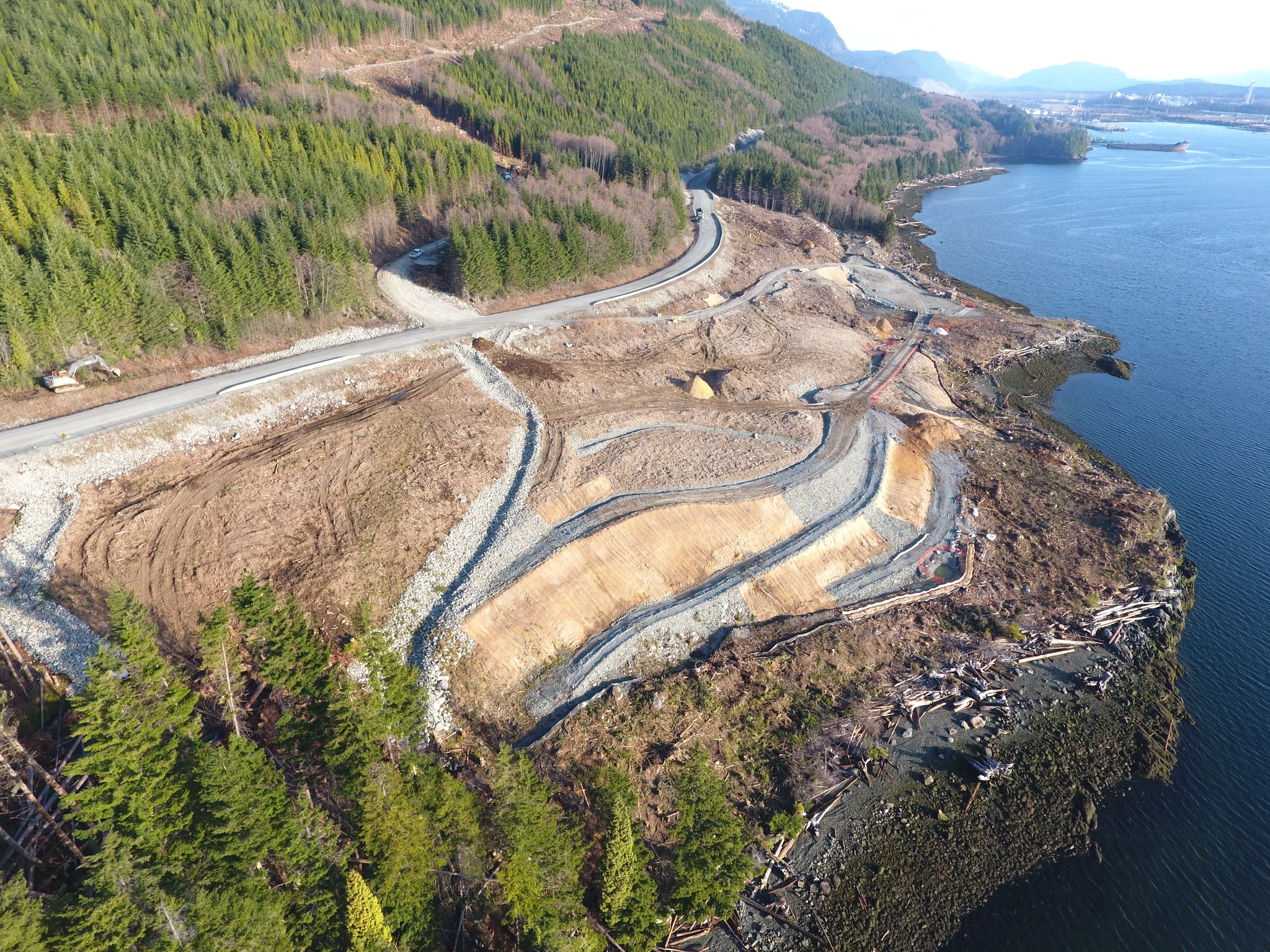The first pipe is officially in the ground for the natural gas line that will supply the world’s first Indigenous-led LNG project.
Eight kilometres of steel — known as the Cedar LNG pipeline — will connect the Haisla Nation’s floating LNG export terminal at Kitimat, B.C. to the Coastal GasLink pipeline, delivering natural gas produced nearly 700 kilometres away in the province’s northeast.
The project posted an image of the new pipeline construction to its social media feeds on July 10.
The Cedar LNG pipeline connects to Coastal GasLink just outside the fence of the now operational LNG Canada terminal via a new metering station and a short system operated by TC Energy called Cedar Link.
By enabling the development of Cedar LNG, a partnership between the Haisla and Pembina Pipeline Corporation, the Cedar LNG pipeline project will stand as a landmark in Indigenous ownership within Canada’s resource sector.
It’s the result of a deal engineered by the Nation, whose traditional territory spans the Kitimat coast.
In fall 2018, as part of a benefit agreement with the LNG Canada project, the Haisla negotiated space on Coastal GasLink for its own LNG project.
That agreement laid the path for Cedar LNG, which started construction in July 2024.
“I think the uniqueness of Cedar is that it was Indigenous-owned from the beginning,” Haisla Nation chief councillor Crystal Smith said on a recent ARC Energy Ideas podcast.
“[For] a little over 10 years, it’s been in our sight and in our vision.”
Construction of the $4.6 billion Cedar LNG project is part of what TD Securities analysts called “a new era for Canadian natural gas” ushered in by the recent completion of LNG Canada.
Since July 1, three separate LNG carriers have left the $18 billion facility with shipments destined for Japan and South Korea.
“The Western Canadian Sedimentary Basin is on the cusp of experiencing the largest increase in natural gas export volume in its history,” TD Securities said in a research note.
Pembina said Cedar LNG can help achieve higher prices for Canadian natural gas while enhancing global energy security.
The company expects it to go into service around 2028.
The unaltered reproduction of this content is free of charge with attribution to the Canadian Energy Centre.


